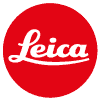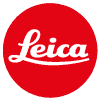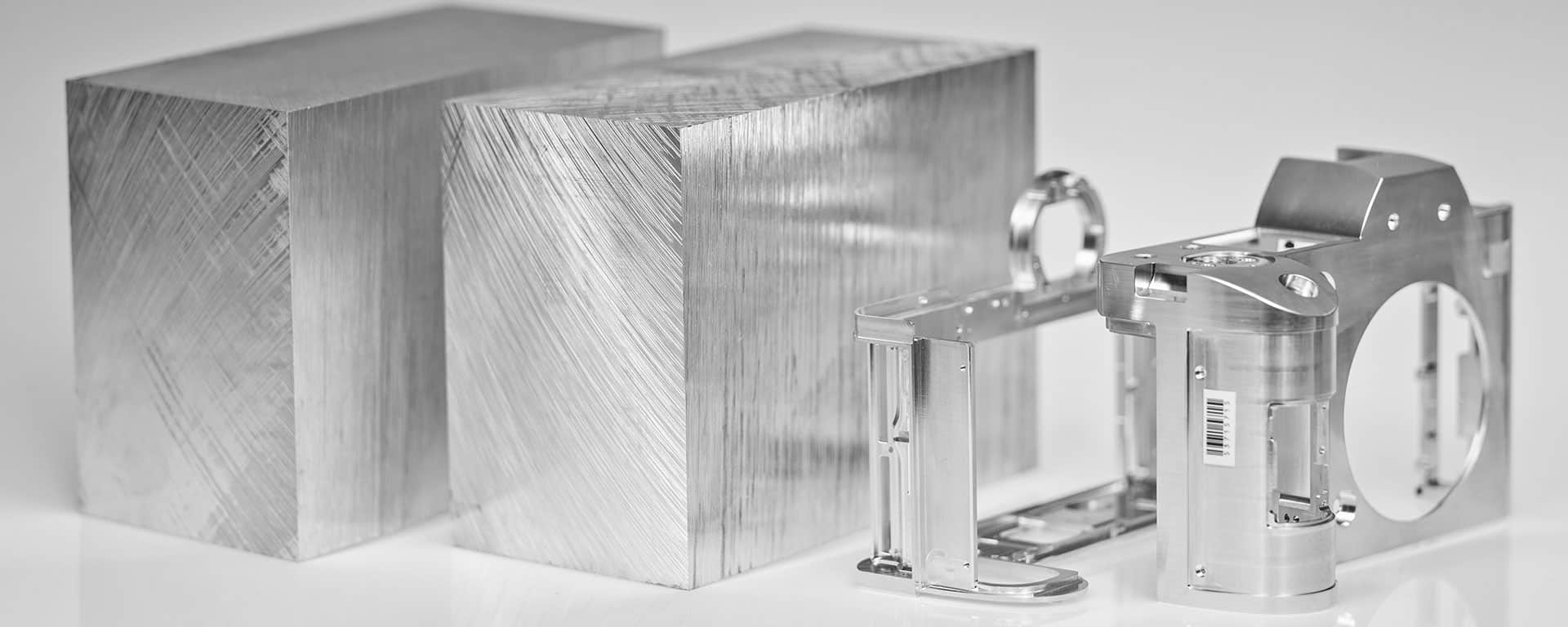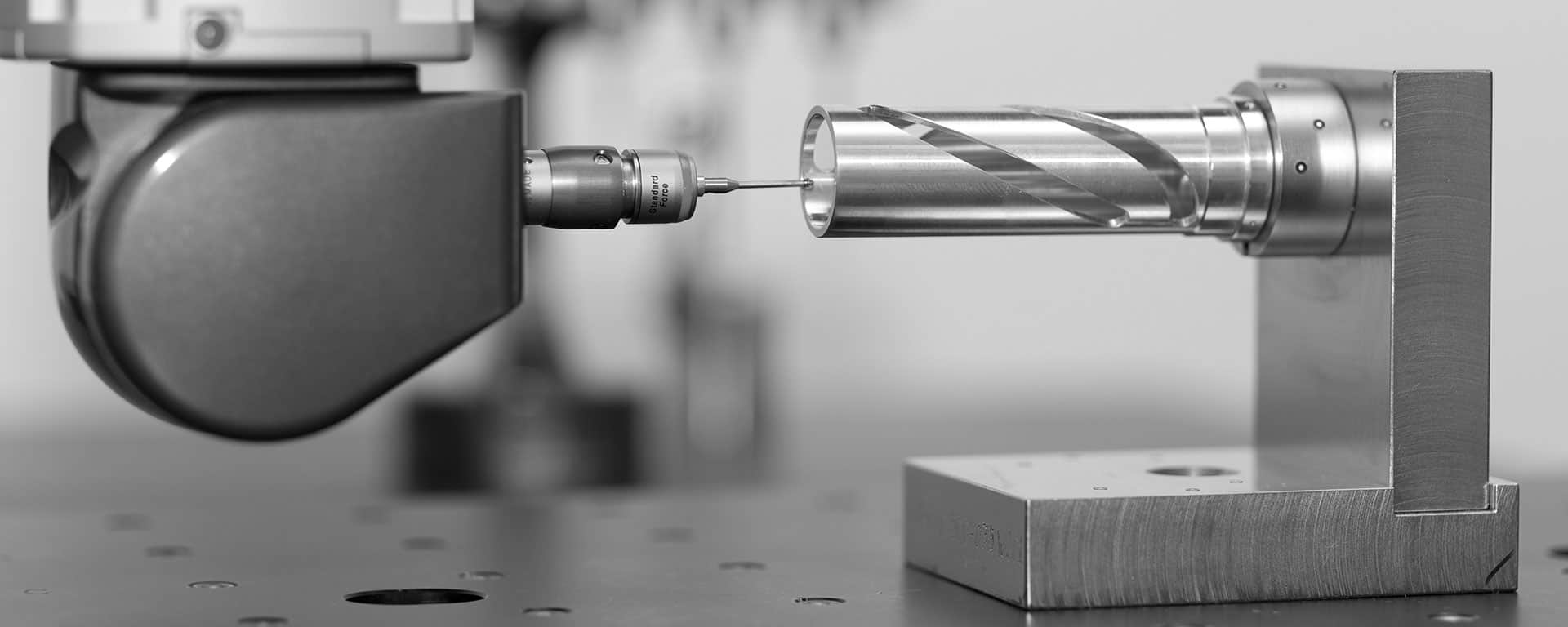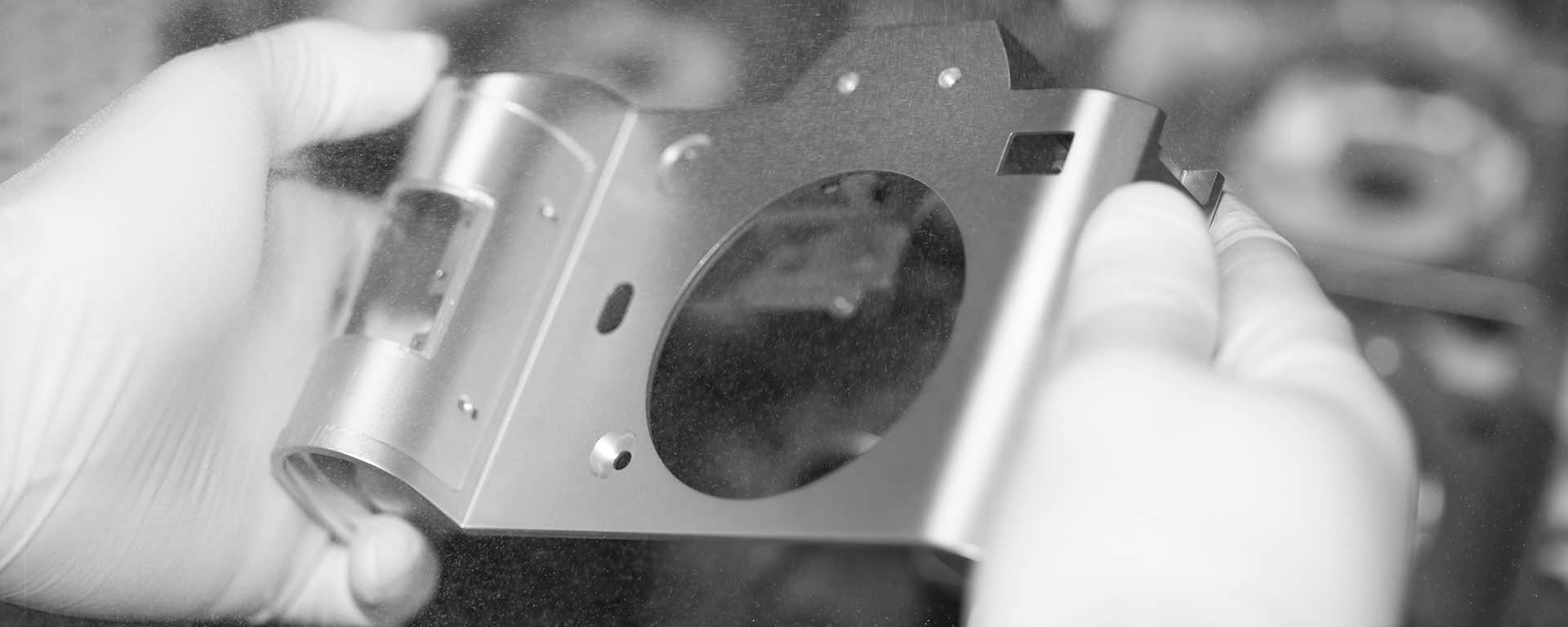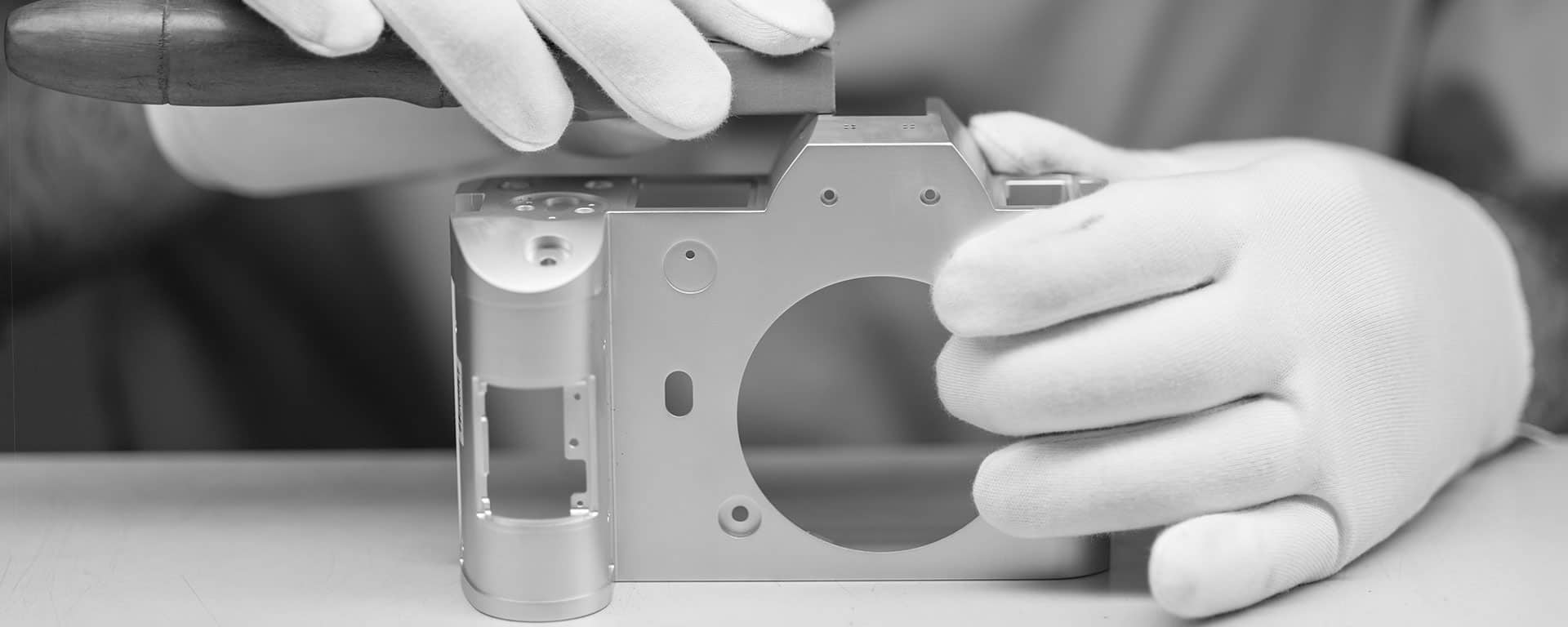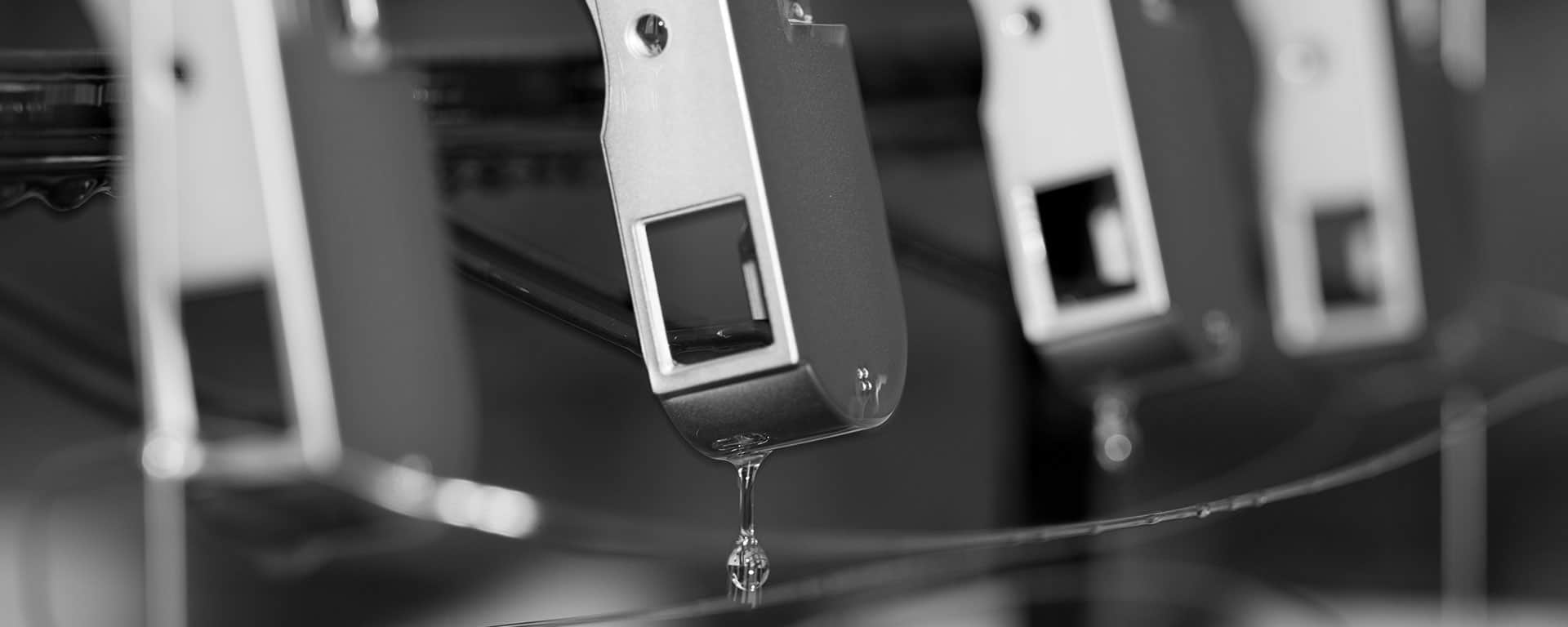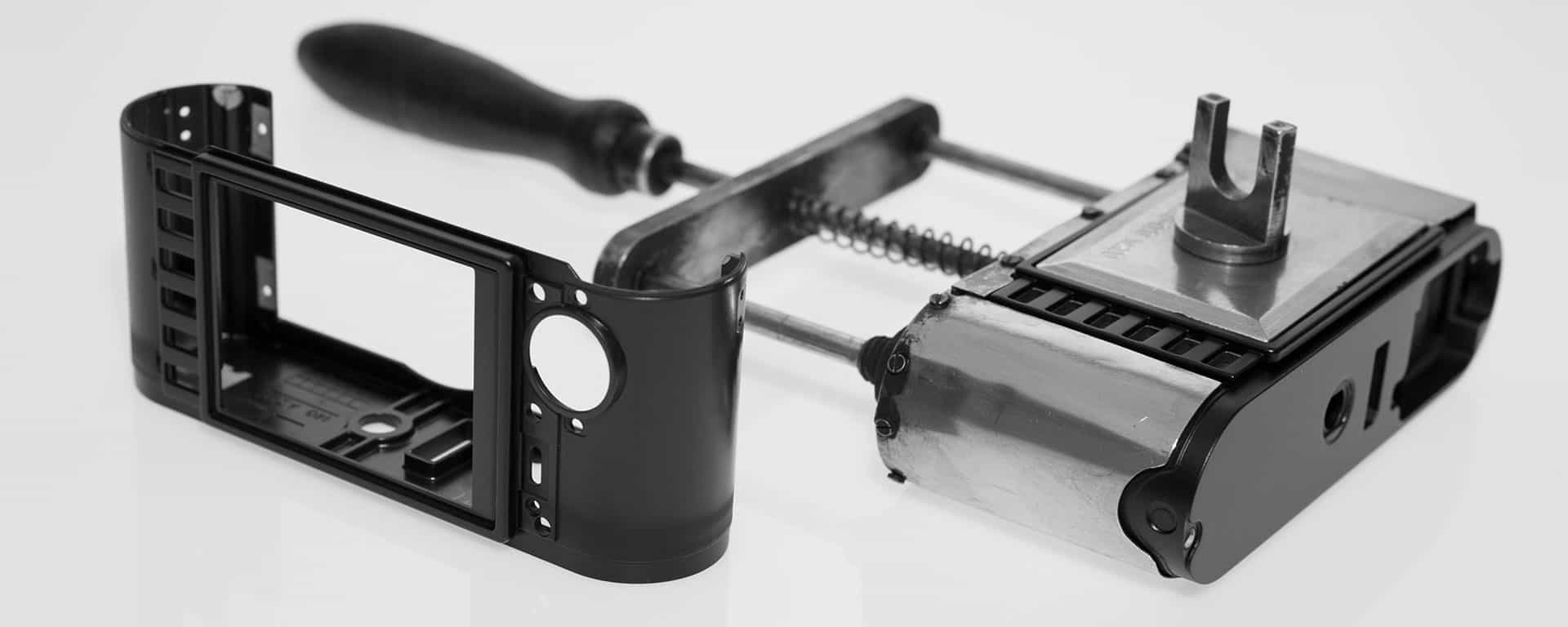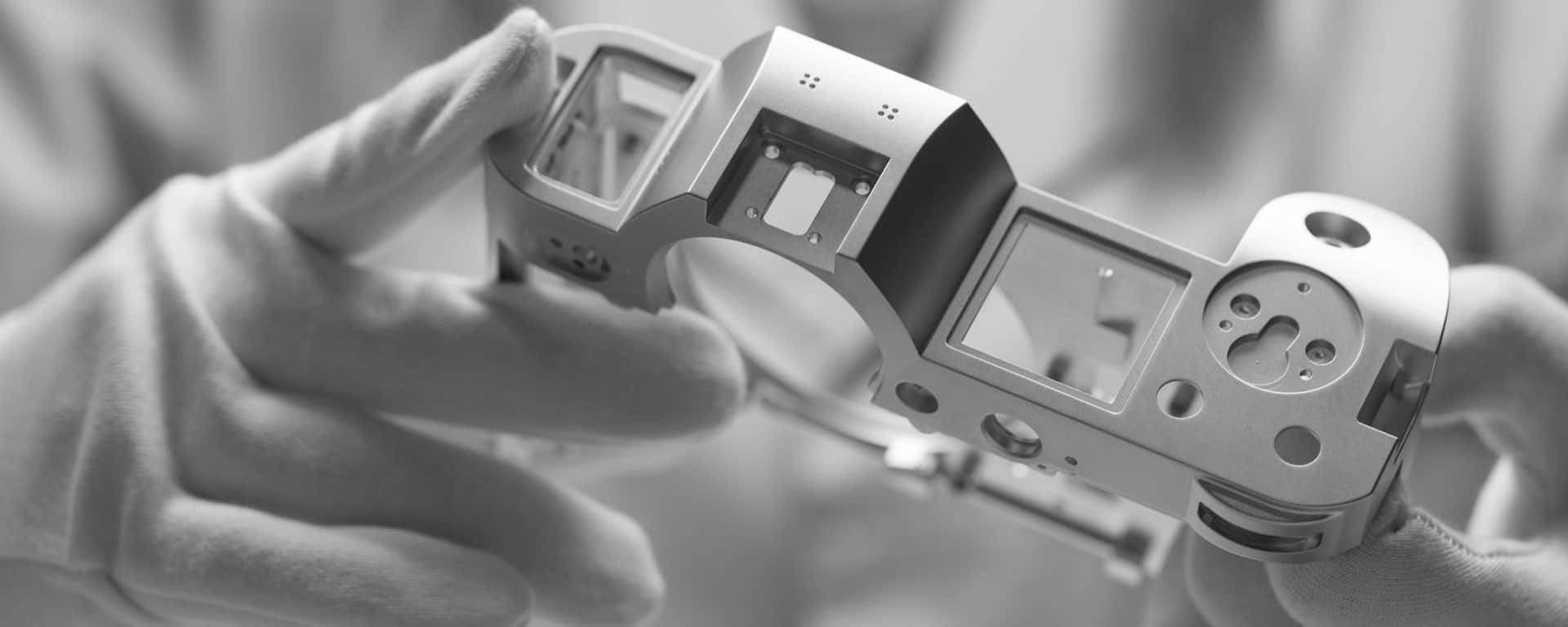The Mechanics section is divided into two production areas: 1) Machining and 2) Surface Treatments. In these two production areas, raw materials (aluminum, brass, magnesium, steel and titanium) are transformed into components of great technical specification and high surface finishes that encompass all Leica products.
Machining is made with state-of-the-art CNC machines but there is also more conventional equipment which, coupled with the experience and knowledge of our staff, allow us to carry out specific and very complex operations that Leica products require.
Surface Treatment begins with manual polishing, a time-consuming and demanding process in which the polishers, with true handcrafted work, provide the pieces with a unique finish, characterised by high quality standards and technical requirements. Anodising, Chroming and Painting, combined with the excellence of the machining processes, provide high quality aesthetic and geometric pieces, guaranteed by professional inspection of all units produced.
CNC TURNING
The turning section is equipped with the latest technology for the production of cylindrical parts. All the equipment has automatic bar feed in order to reduce the intervention of the operator and to guarantee tempo of production. CNC Turning is the first phase of the production process of cylindrical parts in aluminum, brass, magnesium, steel and titanium.
MILLING
In the milling section, the parts are machined from solid blocks (in horizontal equipment), cast or pre-machined parts (in vertical equipment). Five-axis equipment is used for complex parts and for prototypes. In this section, due to the complexity of the parts at a geometric and aesthetic level, the production is carried out piece by piece and all parts are placed, removed and inspected by the operator.
FINE TURNING
In fine turning, the parts are machined in a unique way, being carefully controlled and placed in individual blisters. In this process, we guarantee the external quality of all cylindrical parts. We also have specific equipment for threading the lens body. This operation allows two or three parts to be integrated through trapezoidal threads with dozens of entries that guarantee a constant and uniform movement.
ENGRAVING
In engraving, specific equipment is used to engrave cylindrical parts and flat surfaces by penetration. It is the last operation of the machining process and the parts are individually worked to ensure the desired level of depth, thickness and quality in all parameters. The pieces are placed in blister packs to avoid any contact between them.
CONVENTIONAL MACHINING
It is a sector with less machinery. Chiefly, milling machines and conventional lathes. Currently, these machines offer additional production capacity to CNC machining processes and are mainly used in simple operations. The sharp edges of the machined parts are finessed with the use of specific tools and manual labour.
POLISHING
It is the first phase of the surface treatment process. In this sector, manual polishing is performed on machined parts, usually milled parts. Operators use minute processes, specific tools and very fine sanding to work the pieces individually, artisanally, contouring all edges and surfaces. All visible areas of the parts are carefully worked out to ensure a constant roughness.
ANODISATION
Anodising is a chemical process that confers resistance to parts and guarantees a high aesthetic quality in all aluminum parts. The most common anodisations are black and white, but other colours can be anodised in special designs. All anodised parts are fully controlled with extremely strict quality criteria.
CHROME PLATING
As with anodising, chrome plating is intended to provide strength to the parts and ensure a high aesthetic quality in all brass parts. Chrome plating is done in black or gray. All chrome parts are individually controlled with very strict quality criteria.
KTL / CATAPHORETIC PAINTING
In this electroplating process, the magnesium parts are coated with the purpose of increasing corrosion resistance. This process must be carefully controlled so that, without changing the dimensions of the parts, it ensures the same thickness throughout the surface.
PAINTING
Decorative painting is done in a class 10000 room. Painters use custom-made templates that allow them to fix the pieces conveniently and protect the areas of the piece that should not be painted. The painting is hand-made piece by piece carefully to ensure that all areas are properly painted and avoiding shadows and marks in the complex geometries of the piece. All parts are individually controlled with very strict quality criteria.
BAS-RELIEF PAINTING
In this sector, the parts are in the final phase of the production process, having been machined and received surface treatments (i.e., anodising, chrome plating or painting). At this stage, a dispenser is used to put excess paint into the grooves of previously made engravings. Subsequently, the paint is removed in excess. The final result is the filling of the engraved areas.
